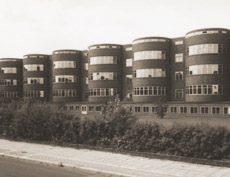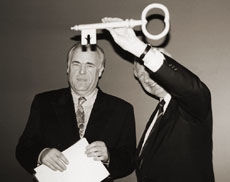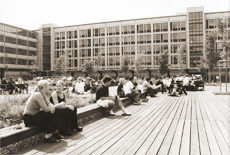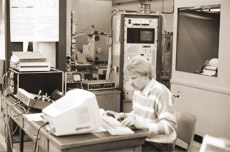


When the Lower Saxony Higher Education Act came into force on 1st October 1978, the College of Education for Lower Saxony / Hannover was incorporated, and the Technical University changed its name to the University of Hannover. With the College of Education, the university gained an educational establishment with a long tradition reaching back into the 18th century and associated with the name of Ernst Christoph Böttcher, the founder of the teacher training college in Hannover. The integration of the College of Education meant that teacher training in Hannover had at last acquired the status that the teachers associations had been calling for since the 19th century: the incorporation of all teacher training programmes into the university.
The university elected its first president on 30th May 1979. One year later the university was restructured according to the Organisation of Higher Education Plan of 1980: 17 departments, 2 faculties and 12 central facilities were created. In summer 1982 the university’s charter was approved by the Ministry of Science and Culture.



For the first time, in winter semester 1990 / 91 there were more than 30,000 students registered, 37.4% of them women. In 1995 the university took over the former administration building of the company Continental at Königsworther Platz, the Conti-Campus. With a floor space of 20,000 m², the Departments of Literature and Languages, Law and Economics and Business Management and their departmental libraries could be housed there. The new chemistry building was opened in 1997, and for the engineers the Underwater Technology Centre was inaugurated in Garbsen in June 1997. In autumn 1999 Technical Informatics received a new building.



In 1997 the Senate passed the university’s Mission Statement. This emphasises the fact that the distinctive character of the university lies in its broad spectrum of disciplines ranging from engineering and natural sciences, aesthetics and planning, law, economics and management, humanities and social sciences and the potential for cooperation that has arisen from this.
In 1997, five Collaborative Research Centres (CRCs) were established at the university, with participation in two further CRCs. In 1999 it was involved in ten CRCs. In this year, third-party funding accounted for 24.5% of the entire university budget. 70 per cent of third-party funding came from engineering.



Also in 1997, an innovation offensive was signed by the State of Lower Saxony and the State Rectors Conference, in which the state government committed itself to not making any further cuts in the higher education budget for the next five years. The innovation offensive itself was to be funded in equal parts by the state and the higher education institutions in Lower Saxony. Ten innovation projects were set up at the University of Hannover with the emphasis on science and engineering. In 1999 the Wissenschaftliche Kommission Niedersachsen (WKN) initiated a state-wide procedure to evaluate research.








